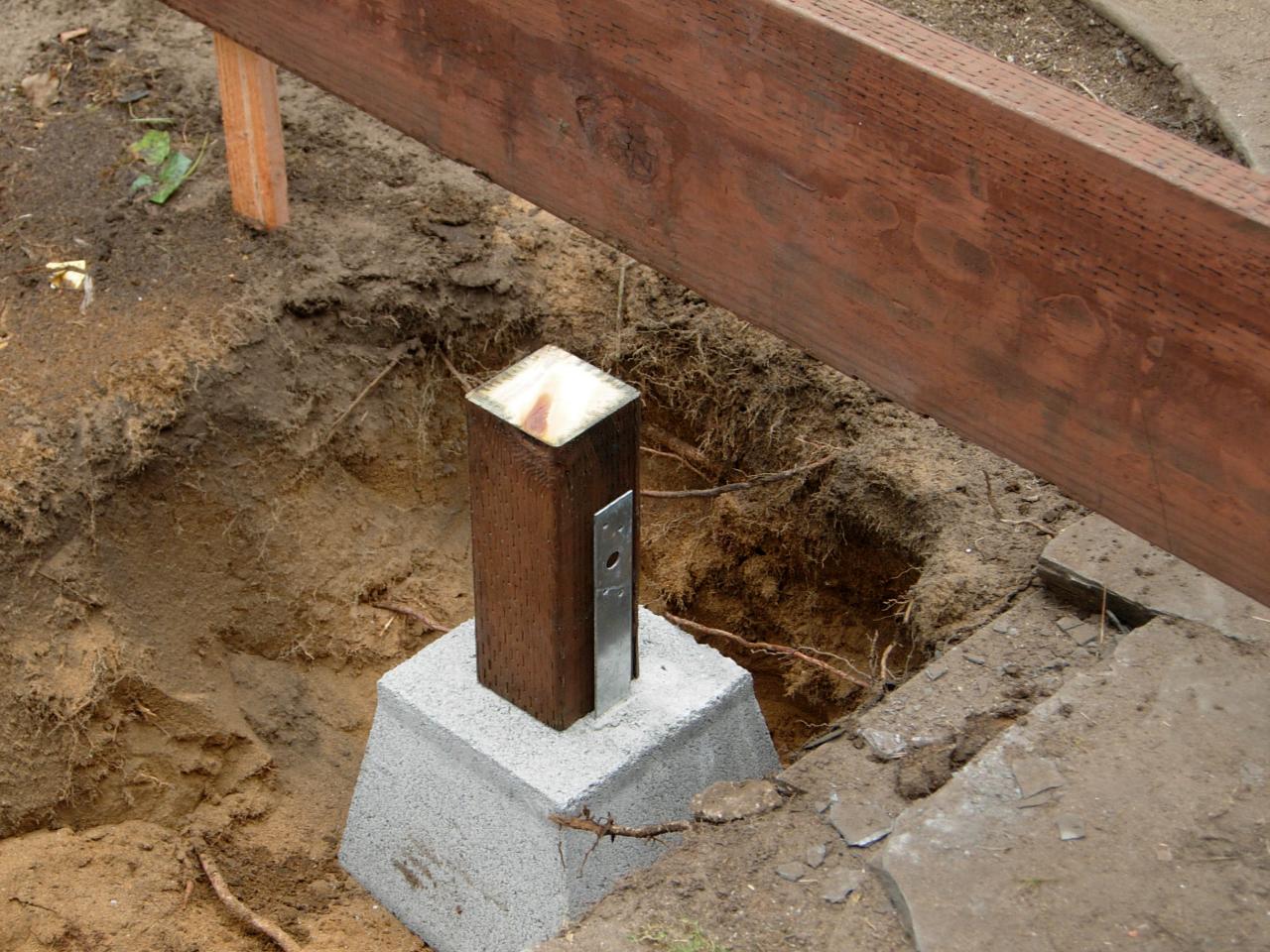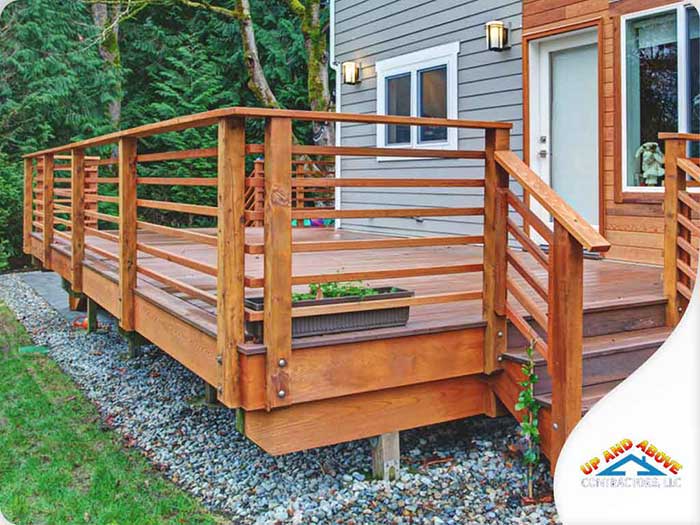Deck Footings Demystified: Your Blueprint for a Safe, Long-Lasting Outdoor Place
Wiki Article
Professional Tips for Installing Deck Footings to Assistance Your Outdoor Area
When it comes to constructing a deck, one of the most essential elements to think about is the setup of appropriate grounds. These grounds are the structure upon which your outside room will certainly relax, providing security and assistance for years to come. What precisely does it take to install deck grounds appropriately?Importance of Appropriate Deck Footings
Proper deck grounds are essential for making sure the security and long life of your outdoor room. When building a deck, it is critical to take notice of the structure on which it will certainly rest. Deck grounds provide the needed assistance for the whole structure and assistance distribute the weight equally - Deck Footings. Without strong and properly installed footings, your deck might become unstable, bring about safety and security threats and expensive repair services.
Along with stability, appropriate deck grounds additionally add to the long life of your exterior room (Deck Footings). Grounds that are created and constructed to endure the elements and dirt conditions in your area will certainly aid prevent the deck from working out or shifting in time. By making certain the footings are properly sized and installed, you can reduce the risk of damages to the deck structure, expanding its life-span and decreasing the demand for costly repair services or replacements

Picking the Right Kind Of Footings
When selecting the proper sort of grounds for your deck, it is essential to take into consideration aspects such as soil problems, neighborhood building ordinance, and the overall style of your outdoor space. The kind of footing you choose will certainly play a crucial duty in guaranteeing the stability and long life of your deck.One typical kind of footing is the concrete footing. Concrete footings are appropriate for a lot of dirt problems and give outstanding assistance for decks.
In many cases, you may require to utilize specialized grounds, such as pile footings or deep structures, if you are building a big or multi-level deck. These footings are made to distribute the weight of the deck over a larger area, guaranteeing stability and protecting against sinking or resolving.
Prior to picking a sort of ground, it is essential to get in touch with local building regulations and laws to ensure conformity. In addition, take into consideration the layout and meant use your outdoor room. Aspects such as the size, shape, and load-bearing requirements of your deck will affect the sort of footing that is most ideal.
Preparing the Ground for Footing Setup
To correctly prepare the ground for footing installment, it is essential to evaluate the soil problems and take necessary actions to make sure security and longevity of the deck. The very first step is to dig deep into the location where the footings will be set up. The deepness of the excavation will rely on the frost line in your area and the specific needs of the deck style. It is crucial to eliminate any plants, rocks, or particles from the excavation to make sure a strong structure.Once the location has been dug deep into, the next action is to portable the dirt. This can be done making use of a plate compactor or by utilizing a hand tamper. Compacting the soil aids to remove any gaps or air pockets, which can cause settling and instability over time.
After condensing the dirt, it is essential to lay a layer of crushed rock or crushed rock at the bottom of the excavation. This will certainly offer water drainage and assistance to avoid water from merging around the grounds, which can bring about disintegration and instability.
Step-by-Step Overview to Setting Up Deck Footings
After appropriately preparing the ground for footing installation, the following action is to start the process of installing deck footings. This detailed overview will certainly offer you with a clear understanding of how to set up deck grounds for your outdoor space.Identify the place: Begin by noting the placements of the deck grounds making use of risks and string. Ensure that the places line up with the style and format of your deck.
Dig the holes: Use a post hole digger or an auger to dig the holes for the grounds. The deepness and diameter of the holes should remain in conformity with neighborhood building ordinance and the specific requirements of your deck design.
Level the holes: Use a level to make sure that the openings are dug to the appropriate deepness and are degree with each various other. (Deck Footings)
Include crushed rock: Area a layer of crushed rock at the base of each opening to enhance drain and stop the timber from rotting.
Put the grounds: Position the grounds into the holes, making certain they are level and plumb. Make use of a degree and a gauging tape to make certain precision.
Safeguard the grounds: Put concrete into the holes around the grounds, loading them to the top. Make use of a blog post degree to make sure the grounds continue to be degree as the concrete sets.
Enable time for treating: Allow the concrete remedy according to the supplier's instructions prior to waging the deck construction.
Usual Errors to Avoid Throughout Footing Setup
One important facet to think about during the installment of deck footings is staying clear of usual errors that can jeopardize the stability and long life of your outside room. While deck grounds might appear like a straightforward and basic part of the construction procedure, forgeting specific factors can bring about pricey repair services and potential security hazards down the line.
Additionally, ignoring to install correct drainage actions can trigger water to accumulate around the footings, leading to rot, decay, and the ultimate weakening of the deck's foundation. Utilizing the incorrect type of footing material or falling short to properly protect the grounds can compromise their structural honesty.
To avoid these errors, it is vital to talk to a specialist or follow market standards to ensure correct ground installation. By doing so, you can guarantee the security and longevity of your outdoor area, supplying a safe and pleasurable environment for many years ahead.
read the article
Verdict
To conclude, setting up appropriate deck footings is vital for the security and long life of your outside area. By picking the appropriate kind of grounds and adequately preparing the ground, you can guarantee a solid foundation for your deck. Complying with a step-by-step guide and avoiding common mistakes during footing installation will further enhance the sturdiness and security of your deck.Proper deck footings are important for guaranteeing the stability and longevity of your outdoor space. The footings serve as a connection between the deck and the ground, allowing the weight of the deck and its occupants to be spread equally right into the soil.One common kind of ground is the concrete ground. Insert the footings: Position the grounds into the holes, making certain they are level and plumb. Secure the grounds: Put concrete into the holes around the grounds, filling them to the top.
Report this wiki page